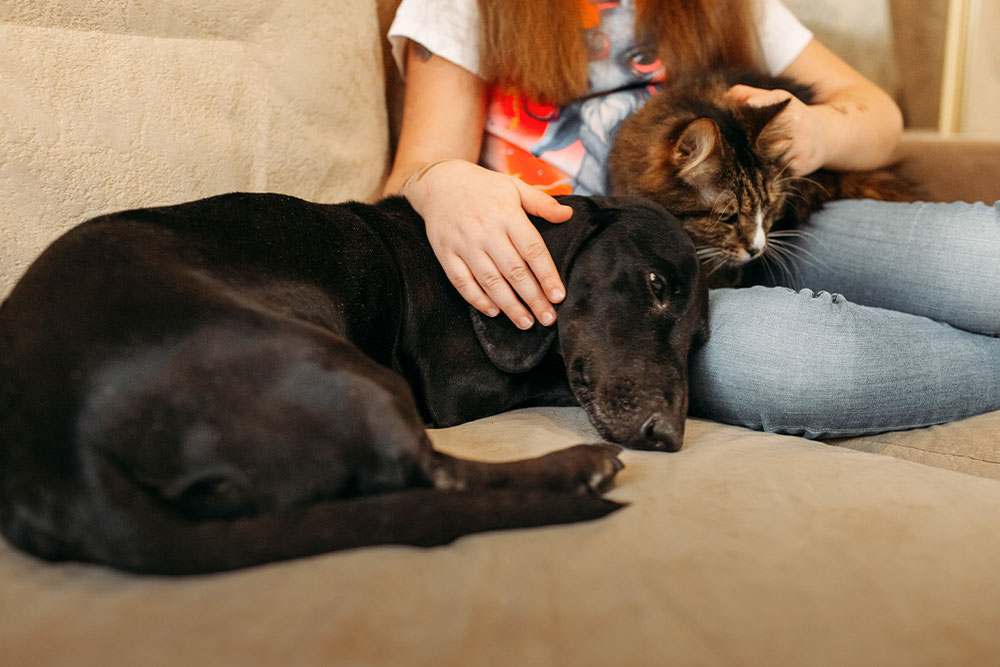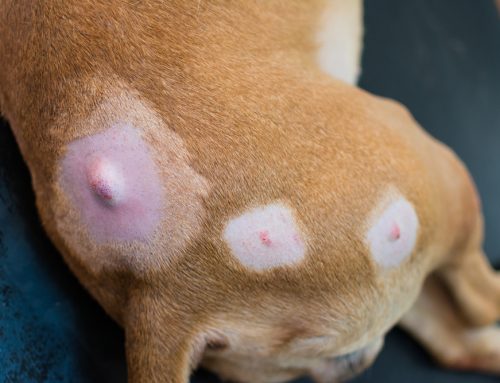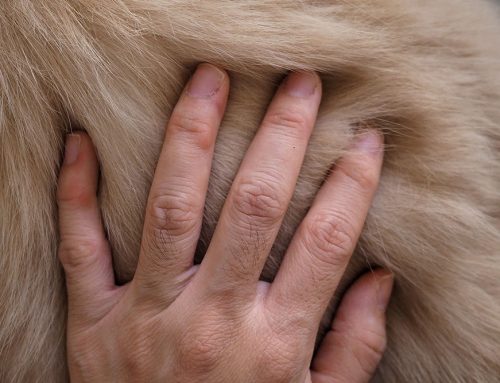Pet Anxiety: Recognizing Stress and Helping Your Dog or Cat Feel Safe
A trembling dog during fireworks, a cat that hides whenever visitors arrive, or a pet that destroys furniture when left alone- these behaviors often signal anxiety, not disobedience.
At Guam Pet Hospital, we understand that stress affects both pets and the people who love them. Our team works closely with families to uncover what’s behind anxiety and create personalized plans that combine behavior support, environmental adjustment, and medical care when needed. Helping pets find calm not only improves their comfort but also deepens the trust they share with you.
What Pet Anxiety Really Means
Pet anxiety is more than simple fear. It’s a physical and emotional reaction that can affect appetite, sleep, and overall health. Because pets can’t verbalize their feelings, they rely on us to notice when something isn’t right.
Common Causes of Anxiety
- Environmental changes: Loud noises like thunderstorms, fireworks, or construction can trigger panic. Even smaller disruptions like new furniture, a house move, or changes in work schedules can unsettle pets who thrive on routine.
- Social or household stress: The arrival of a new baby or pet, time alone after owners return to work, or tension between animals in the same home can all lead to chronic worry.
- Health-related factors: Physical discomfort from arthritis, dental disease, or internal illness can make pets restless or withdrawn. In senior pets, cognitive dysfunction may cause confusion, pacing, or new fears.
Anxiety isn’t just emotional- it can weaken the immune system, affect digestion, and lead to destructive or self-harming behavior. Identifying stress early allows your veterinarian to rule out pain and illness, ensuring treatment focuses on the true cause.
Recognizing Signs of Stress and Anxiety
Physical and Behavioral Clues
Anxiety appears differently in every pet.
- Dogs may tremble, pant, pace, or chew destructively when upset. Some become hypervigilant, bark excessively, or lose bladder control during stressful moments.
- Cats often hide, overgroom, change litter box habits, or become unusually irritable. Many cat behavior issues once thought to be “bad habits” actually stem from chronic anxiety or discomfort.
Body Language Tells the Story
Understanding body language helps you recognize early warning signs before behavior escalates. Canine communication includes lip licking, yawning, turning away, crouching, or tucking the tail- subtle ways dogs show fear or uncertainty.
For cats, tension is often visible in posture and expression. Feline body language cues like flattened ears, dilated pupils, or crouched stance indicate unease. The feline grimace scale can help identify when facial tension suggests pain rather than emotional distress.
By learning these cues, owners can step in early- offering comfort, adjusting routines, or seeking veterinary guidance when anxiety persists.
What Triggers Anxiety in Pets
Noise Sensitivity
Noise aversion is one of the most common triggers for both dogs and cats. Fireworks, thunder, or loud vehicles can lead to trembling, hiding, or escape attempts. Storms are particularly challenging due to changes in pressure, static electricity, and flashes of light.
Creating a quiet, insulated space with soothing music or familiar bedding can help pets feel secure. Gradual desensitization and positive pairing with mild sounds can reduce fear over time.
Social and Environmental Changes
Big life transitions- a move, a new family member, or changes in household routines- can cause confusion or sadness in pets that depend on consistency. Cats are especially sensitive to environmental changes and may stop eating or seek isolation.
Separation anxiety in dogs is another frequent concern, leading to destructive chewing, persistent barking, or frantic escape attempts shortly after an owner leaves.
In multi-pet homes, inter-cat tension or reactive behavior in dogs can arise when space, toys, or attention feel scarce. Some pets even develop resource guarding, defending items or people when they feel uncertain or insecure.
Understanding what triggers anxiety makes it easier to rebuild your pet’s sense of safety.
Helping Pets Cope and Recover
Training That Builds Confidence
Behavioral training helps pets replace fear with focus. Positive reinforcement rewards calm, confident actions and helps pets form new emotional responses to triggers. Games like the engage-disengage training game allow dogs to observe stressful situations from a distance and respond calmly instead of reacting in fear.
Handling-based training, such as cooperative care for dogs and cats, teaches pets to participate willingly during grooming or veterinary visits, building trust through predictability and patience.
Enrichment and Environmental Support
Mental stimulation reduces anxiety by giving pets productive outlets for energy and curiosity.
- For cats: Enrichment toys, climbing structures, and indoor setups with hiding spots allow natural exploration.
- For dogs: Enrichment ideas such as puzzle feeders, sniffing games, and sniffari walks encourage natural behavior and relieve boredom-based stress.
Small changes- like adding calming scents, establishing consistent routines, and avoiding crowded spaces- can make a noticeable difference.
Veterinary and Nutritional Care
Some pets need additional support through medication or supplements. Pheromones such as Adaptil or Feliway create a chemical signal of safety that can help calm anxious animals.
At Guam Pet Hospital, we tailor treatment to the individual– from anti-anxiety medications to dietary adjustments and pain management for pets whose discomfort contributes to stress. Dr. Bob and our team use modern diagnostics and over 40 years of experience to ensure every solution supports your pet’s emotional and physical health.
Partnering With Your Veterinarian
Visiting the vet can be stressful for anxious pets, but preparation can help. You can make your veterinary visits less stressful by bringing treats or toys from home, scheduling quieter times, and informing our team about your pet’s specific fears.
In some cases, pre-visit medications or pheromone sprays can ease travel and exam anxiety. Our compassionate team takes extra time to make every appointment as calm and comfortable as possible.
Diagnostics and Evaluation
Because anxiety can mimic or mask other medical conditions, veterinary evaluation is essential. A full exam may include blood work, pain assessment, or review of behavior patterns to distinguish fear-driven behavior from illness.
When underlying issues are found, treatment can begin immediately- whether that means pain control, nutritional changes, or structured behavior therapy.

Common Myths About Pet Anxiety
- “They’ll grow out of it.” Most pets won’t. Anxiety typically worsens without guidance or intervention.
- “It’s just misbehavior.” Fear, pain, or confusion often drive “acting out.” Recognizing the cause allows for compassionate solutions.
- “Medication is a last resort.” Medication can provide balance, allowing pets to learn and recover successfully.
Supporting Calm, Confident Pets in Our Island Community
At Guam Pet Hospital, we treat every patient with love, respect, and excellence- because your pets are part of our island family. Whether your pet’s anxiety stems from storms, separation, or an underlying medical issue, we’re here to help you understand it and find relief together.
If your pet shows signs of fear, panic, or sudden behavior changes, call (671) 682-8890 or request an appointment. Our compassionate team will help your pet feel safe, supported, and at home- because here, your problems are our problems, too.








Leave A Comment